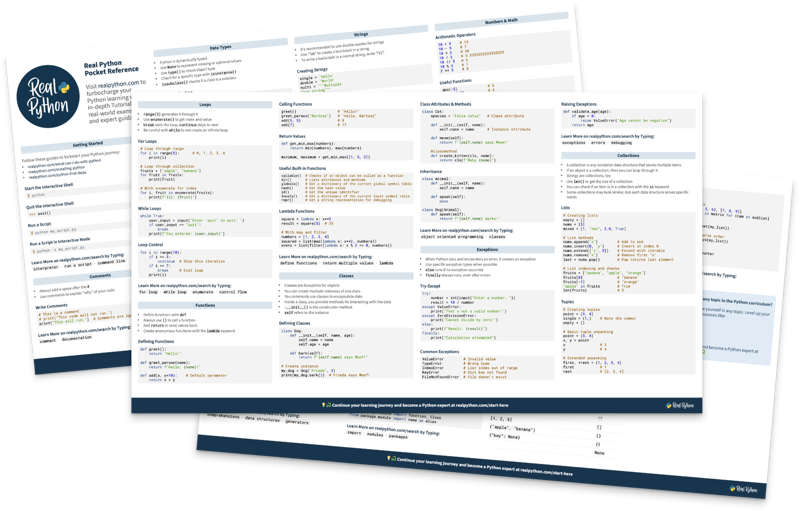False
In Python, the False keyword represents a Boolean value that indicates the false truth value in logical operations and expressions. It’s defined as a built-in constant with a value of 0 and is a subclass of int.
Python False Keyword Examples
Here’s an example demonstrating how the False keyword can be used in Python:
>>> is_adult = False
>>> if is_adult:
... print("They're more than 18 years old")
... else:
... print("They're less than 18 years old")
...
They're less than 18 years old
In these examples, the conditional check the value of is_adult. Because it’s False, the else clause runs.
Python False Keyword Use Cases
Related Resources
Tutorial
Python Booleans: Use Truth Values in Your Code
In this tutorial, you'll learn about the built-in Python Boolean data type, which is used to represent the truth value of an expression. You'll see how to use Booleans to compare values, check for identity and membership, and control the flow of your programs with conditionals.
For additional information on related topics, take a look at the following resources:
- Python Keywords: An Introduction (Tutorial)
- Conditional Statements in Python (Tutorial)
- Python while Loops: Repeating Tasks Conditionally (Tutorial)
- Python Booleans: Leveraging the Values of Truth (Course)
- Exploring Keywords in Python (Course)
- Python Keywords: An Introduction (Quiz)
- Conditional Statements in Python (if/elif/else) (Course)
- Python Conditional Statements (Quiz)
- Mastering While Loops (Course)
- Python while Loops: Repeating Tasks Conditionally (Quiz)

